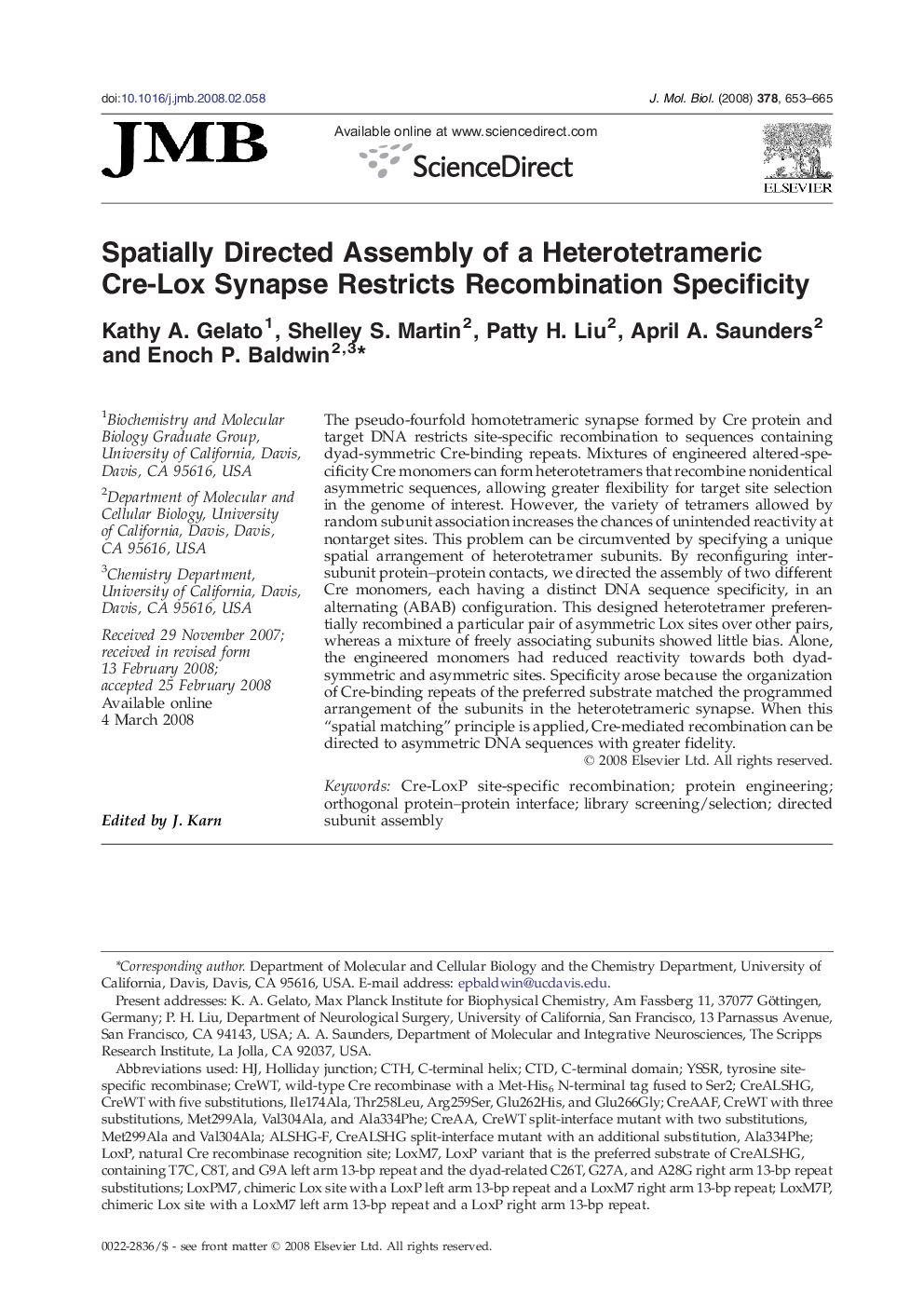| Article ID | Journal | Published Year | Pages | File Type |
|---|---|---|---|---|
| 2187694 | Journal of Molecular Biology | 2008 | 13 Pages |
The pseudo-fourfold homotetrameric synapse formed by Cre protein and target DNA restricts site-specific recombination to sequences containing dyad-symmetric Cre-binding repeats. Mixtures of engineered altered-specificity Cre monomers can form heterotetramers that recombine nonidentical asymmetric sequences, allowing greater flexibility for target site selection in the genome of interest. However, the variety of tetramers allowed by random subunit association increases the chances of unintended reactivity at nontarget sites. This problem can be circumvented by specifying a unique spatial arrangement of heterotetramer subunits. By reconfiguring intersubunit protein–protein contacts, we directed the assembly of two different Cre monomers, each having a distinct DNA sequence specificity, in an alternating (ABAB) configuration. This designed heterotetramer preferentially recombined a particular pair of asymmetric Lox sites over other pairs, whereas a mixture of freely associating subunits showed little bias. Alone, the engineered monomers had reduced reactivity towards both dyad-symmetric and asymmetric sites. Specificity arose because the organization of Cre-binding repeats of the preferred substrate matched the programmed arrangement of the subunits in the heterotetrameric synapse. When this “spatial matching” principle is applied, Cre-mediated recombination can be directed to asymmetric DNA sequences with greater fidelity.
